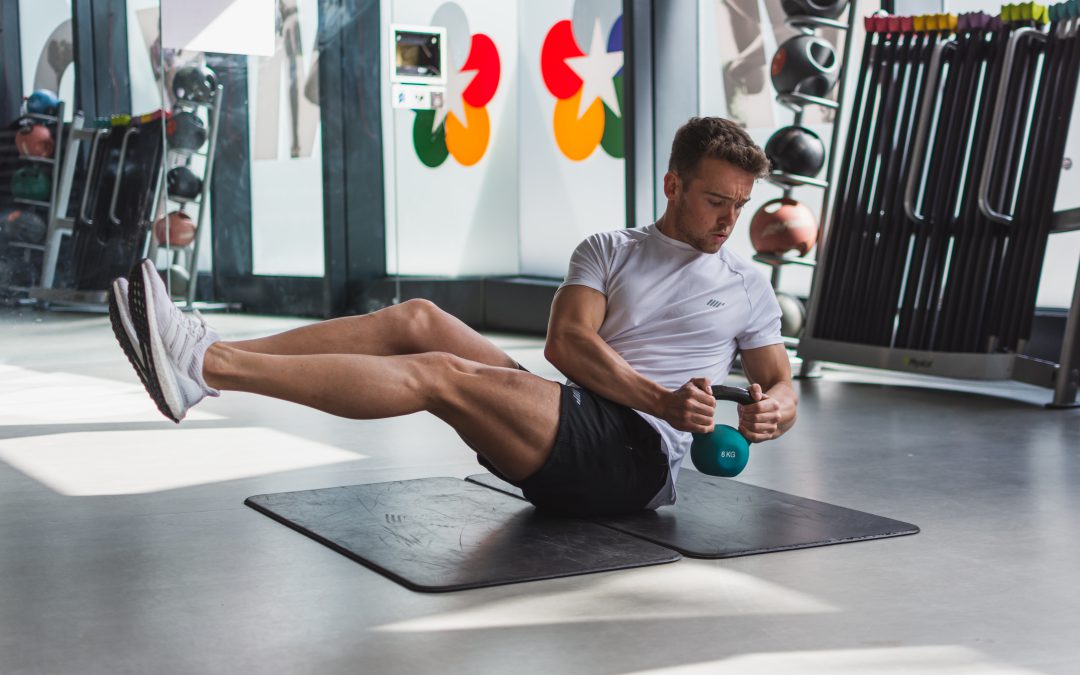Not sure what to do with sore muscles after a workout? Here’s how to know when to rest and when to work out.
Why Do We Get Sore Muscles From A Workout?
Sore muscles are a normal side-effect of working out, and usually nothing to worry about. When we exercise, we create minuscule microtears in the muscles which then need to rebuild and repair. This is nothing to worry about, in fact it’s all part of how the body adapts to the stimulus of your training session.
As your body gets used to the type of workout you do, the amount of soreness you feel will reduce. But then if you switch up any aspect of your workouts – whether that’s the speed or distance of a cardio session, or the weights you lift in the gym – you will probably feel sore again. And if you skip leg day for a while, you can expect to feel sore next time you do squats!
Sore muscles are nothing to worry about, but you might still be wondering “should I workout with sore muscles or should I rest until I feel better?” Working out when your muscles still feel sore is almost always a good idea. Your next workout will actually help the recovery process, and the more you exercise the less you will experience post-workout soreness.
The only time you should think twice about working out with sore muscles is if the pain is causing you to move in a weird way or compensate to avoid the discomfort.
Tips For Working Out With Sore Muscles
You’ve made the sensible decision to crack on with your next workout even though your muscles feel a bit sore. But you don’t want to make the soreness even worse. Here are a few things you can do when you’re working out with muscles that already feel a bit tender.
Warm Up Thoroughly Before Your Workout
Warming up properly before you get into your training session is a good way to ease muscular aches and pains. A 5-10 minute warm up will increase blood flow from your core to the working muscles and will prep your body for the movements you’re about to do. Some good options for a warm up include gentle cardio, active stretches, or low-impact variations of the movements in your workout.
Exercise Different Muscle Groups
If your legs are really sore, it’s a good idea to train your upper body. If your shoulders are still feeling it from your last workout, why not train legs? It makes sense to exercise a different muscle group if you’re feeling sore in a particular area. The workout will still help to ease the sore muscles and you’ll get an endorphin boost.
Pay Attention To Your Body
Don’t let sore muscles keep you away from the gym, but be smart about it. There’s no truth in the mantra “no pain, no gain”. If the soreness is getting worse even after a good warm up, consider modifying your workout (lower weights, different exercise choices, or another type of workout altogether). And if you’re experiencing sharp pain, cut the workout short and seek the advice of a physiotherapist or sports doctor.
Commonly Asked Questions On Working Out With Sore Muscles
Is It Ever Safe to Keep Exercising Through Pain?
Get to know what’s normal for your body so you can tell the difference between sore muscles and pain. Feelings of pain – like sudden sharp pain, or discomfort that restricts your movement – could be a sign of a strain, sprain or muscle tear that needs rest or even rehabilitation.
Are There Any Risks To Working Out With Sore Muscles?
There are no risks to doing a workout with sore muscles, if that’s all it is. In fact, the biggest risk is using muscle soreness as a reason to skip a few workouts and fall out of your healthy fitness routine.
If you’re feeling normal levels of muscle soreness from exercise, keep active and consider switching up your next workout so you don’t directly impact the sore muscles. But don’t worry that you’ll be making it worse. Exercise actually helps your muscles recover (even when they feel sore!)
What Is DOMS?
You might hear fitness professionals talk about DOMS when they’re referring to having sore muscles after a workout. DOMS stands for delayed onset of muscle soreness, and that’s exactly what it is. DOMS usually kicks in 48 hours after a training session and feels like stiffness, soreness or even a sensation of weakness in the muscle groups. It’s nothing to worry about and will usually go away within a few days, especially if you do some things to speed up the recovery process.
What to Do With Sore Muscles After A Workout?
There are a few things you can do to ease muscle soreness and speed up your recovery from DOMS after a workout. Most of them are free and easy to do at home, so make sure these healthy habits are part of your regular workout recovery routine.
Get a Massage
A sports massage doesn’t just feel good when you’ve got sore muscles, it will increase blood flow and increase your range of movement, helping you recover faster.
Try A Massage Gun
Massage guns are a good way of getting some of the benefits of sports massage at home. Go slowly and avoid bony areas. Follow it up with some gentle stretches to encourage blood flow.
Do Some Foam Rolling
Foam rolling is a great at-home recovery technique that you can do every day if you want. Spend 5-10 minutes rolling out the large muscles of the legs and back and then do a bit of stretching.
Do Some Active Recovery
Active recovery is a good way to keep your lymphatic system moving to speed up recovery when you’re sore. Try some light cardio like a walk, gentle bike ride or low impact cardio machines, or a yoga session.
Keep Up Your Healthy Diet
What you eat can definitely impact your recovery from sore muscles after a workout. Prioritise protein to repair those muscles, and try to avoid too much processed sugary foods. Wholefoods have more nutrients which is what your body needs right now.
Run a Cold Bath
Cold water might not sound appealing, but research shows that cold water therapy can speed up recovery from sore muscles. If sitting in a cold bath is a step too far, try turning the shower to cold for the final few minutes.
Try Some Recovery Supplements
There are a few supplements that can help with sore muscles, but make sure you’ve got your nutrition, hydration and sleep in place first. The best supplements for sore muscles include protein powders and protein shakes (a convenient way to increase your protein intake), magnesium (to promote restful sleep) and omega 3 fatty acids.
What To Do With Sore Muscles After A Workout
Feeling sore or stiff after a workout is pretty normal, and can simply be a sign that you’ve pushed harder than usual or done something different. Don’t let muscle soreness keep you away from your regular workout routine.
If the sensation is more like a sharp pain, or if you’re feeling it in your joints, consult a physio or sports doctor. But if it’s simply a case of sore muscles, stay active and keep working out. Your body will soon adapt to training sessions, and the best way to reduce muscle soreness is to keep exercising!
If you’re really struggling with DOMS after a workout, try an active recovery session of light cardio, followed by some foam rolling and gentle stretches. And don’t forget that healthy habits like sleep, protein, good nutrition and drinking water will help your body repair from sore muscles.



